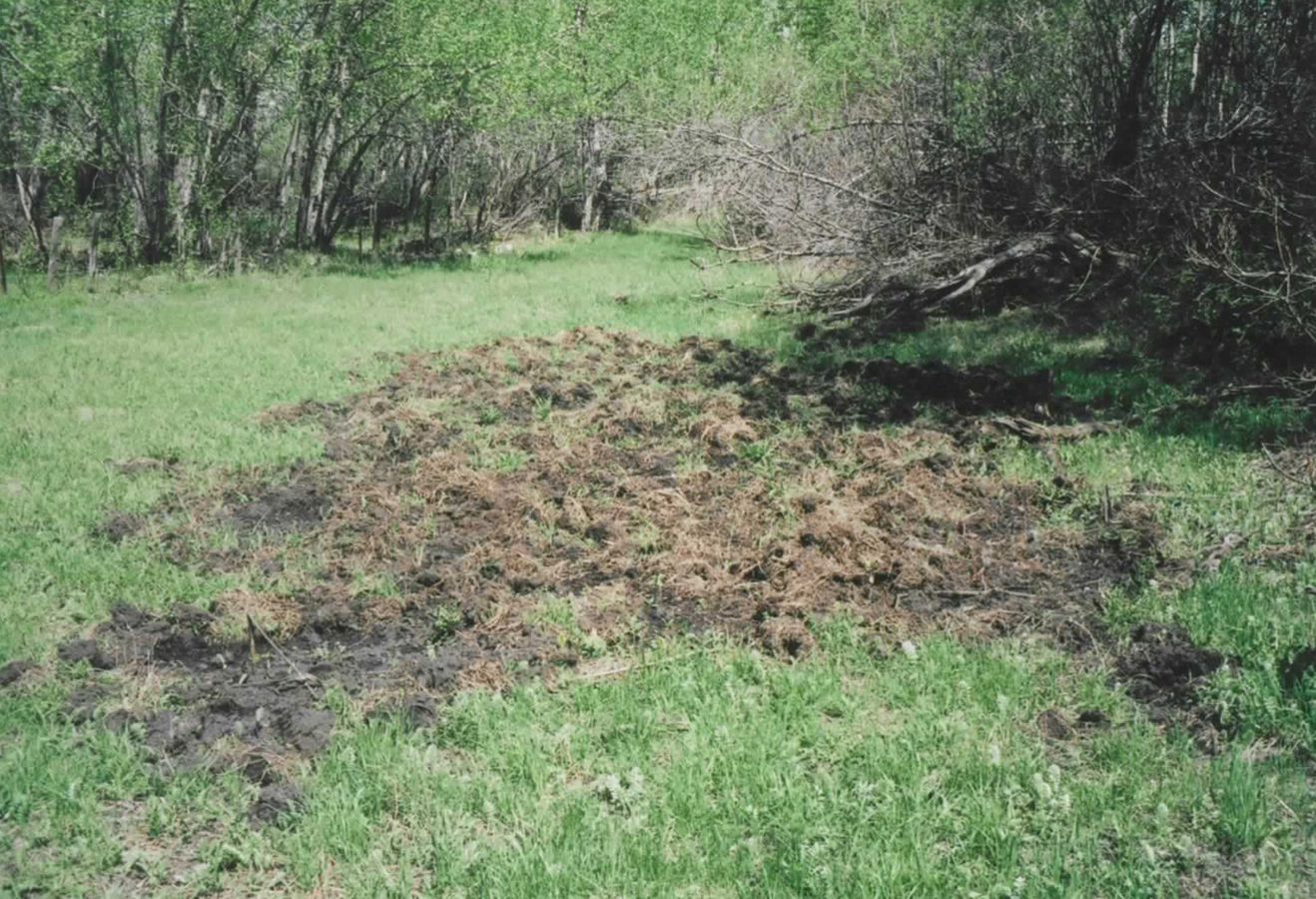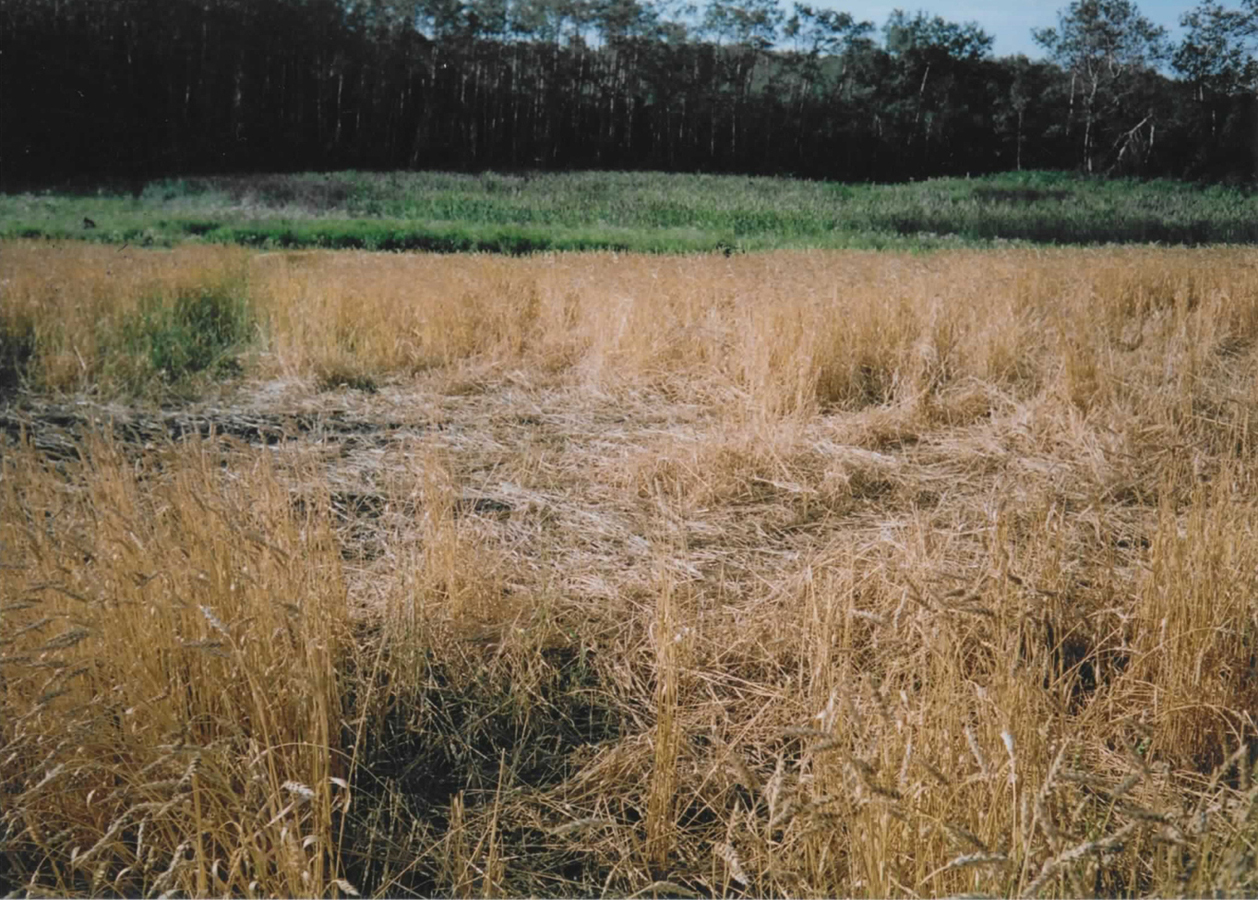Fencing for outdoor pig production: protecting your livestock and the environment
Learn about building fencing suitable for pig containment and exclusion. This technical information is for commercial pork producers in Ontario.
ISSN 1198-712X, Published February 2020
Introduction
The purpose of this factsheet is to provide guidance on building fencing suitable for pig containment and exclusion. This includes fencing to keep pigs with outdoor access on your property, and/or fencing to keep feral pigs away from your livestock and crops.
Preventing pigs from escaping outdoor housing enclosures can be a difficult task. Pigs are strong, agile and can jump over barriers. Keeping them contained however, is extremely important. Escaped pigs are hard to catch and can quickly turn into lost revenue for your farm if they are not recovered. It only takes a short period of time for an escaped pig to become feral, and if other feral pigs are nearby, they can quickly breed, producing multiple litters each year. The term “wild pig” refers to any swine (Sus scrofa) outside of a fenced area, which includes Eurasian wild boar, domestic pigs and hybrids.
Pigs can survive well in Ontario climates and have extremely flexible diets, allowing them to adapt easily. Wild pigs are one of the most invasive mammals on the planet and cause extensive damage to agricultural land, crops, native ecosystems and other animals. The U.S. estimates the annual cost of damage caused by wild pigs is $1.5 billion, although under-reporting is likely. Wild pigs are often termed “ecological train wrecks” due to the amount of damage they can inflict on land and animals. It is imperative that pigs housed (or provided access to) outdoors must not be given the opportunity to escape in order to prevent lost farm revenue and exacerbation of the wild pig population in Ontario.
Primary risks (and sources of lost revenue) associated with wild pigs can include:
- significant damage to crops and fields (pigs can destroy the crop and the ground by rooting, Figure 1)
- predation and/or harassment of other livestock (they can kill calves, goat kids, lambs, deer, etc., and will also block or deter access to feeders)
- aggression towards humans (razor sharp tusks can cause significant damage to people, including death)
- disease transmission (wild pigs can carry diseases of concern to the swine industry, as well as zoonotic diseases, which can be transferred to people)
- natural ecosystem damage (trampling, wallowing, rooting, resource competition, plant damage, animal damage, including destruction of ground nests and consumption of small reptiles and amphibians)


Figure 1. A small group of wild or escaped pigs can destroy 10–12 acres overnight. Pigs will consume crops, but will also root the ground, causing significant damage to the field itself. Photos courtesy of Ryan Brook, University of Saskatchewan.
Proper fencing reduces the risk of your pigs escaping, and also protects your herd from interactions with wild pigs in the area. It is your responsibility as an animal owner to ensure that they are kept on your property. Escaped pigs will likely roam onto neighbouring properties, especially if crops or feed sources are present. If your pigs escape, you can be held responsible for damage to crops, other livestock and property. Escaped pigs can also become a road hazard, increasing the risk of road accidents. If you are housing pigs outdoors for any stage of their production cycle, ensure your fencing is strong, sturdy and tall in order to protect your pigs, the land, other animals and your farm profits.
Fencing options
There are many different fencing options for housing livestock outdoors, and the type of fencing you select can depend on several factors, including cost, sturdiness, longevity and ease of set-up/repair.
The size and type of animal housed plays a major role in determining what fencing type to use on farm, and not all fencing types are suitable for pigs. For example, piglets will require fencing with smaller gaps compared to fully grown pigs, but fully-grown pigs will require much stronger fencing than piglets. It is important to consider the size of your pigs when developing a fencing plan for your farm. Remember, pigs can go over (Figure 2), through or under a fence if the fence is not designed properly, and their strong snouts can lift fencing, including posts, if it is not secure.
When researching fencing options, it is important to critically assess any fencing under consideration for its suitability for pigs. The size of the pig(s) is important, and their ability to dig, lift, jump and push through small spaces with considerable force should not be underestimated.

Figure 2. Pig jumping over a tall, wire mesh panel fence
Source: Deer & Deer Hunter

Figure 3. Page wire (net wire) fencing containing smaller spacing closer to the ground for smaller pigs and a height of 1.5 m for larger pigs. It can be used in combination with electric wires and/or a buried mesh skirt. Photo courtesy of Oklahoma Steel and Wire.
Fencing types
Options that may be suitable for pigs include page wire, solid wooden or metal fencing, high tensile wire, pipe panel and electric fencing. For a barnyard enclosure, a concrete floor and walls, a concrete floor with prefabricated welded metal fencing panels, or strongly constructed wooden fencing are best suited.
Details on several different types of farm fencing can be found in the OMAFRA factsheets Farm Fencing Systems and Sheep – Fencing Options for Predator Control at ontario.ca/omafra.
For pigs, it is recommended to combine multiple types of fencing to better contain (or exclude) them. An example of this is page wire fencing (Figure 3) with electric wires located low (at pig height) and high (to prevent jumping). Research into fencing to control (exclude) wild boar found that only a combination of an extremely strong page wire fence combined with electric fencing was adequate to prevent wild boar from crossing.
Because pigs can jump, if adult pigs are being kept outdoors, fences should be at least 1.5 m high. Pig fencing should also go below ground level if possible. This can be accomplished by burying some of the fence below ground, or by attaching a mesh skirt which is buried underground to a depth of 60 cm. A 90° angle underground will significantly reduce the risk of successful rooting under the fence. Double row fencing with an underground mesh skirt at a 90° angle on one fence, with an electric wire between the two rows, is considered the “gold standard” for pig fencing. Double row fencing is standard practice in many regions where pigs are routinely kept outdoors.
Electric fencing should be tested daily to ensure it is working properly. For fencing for piglets, ensure that plant material is not touching the bottom electrified wire and reducing its charge.
When pigs first encounter electric fencing, it is highly likely they will jump forward, toward the fence, as opposed to jumping backwards from the shock. To train them not to do this, set up the electric fencing in an area where there is a solid wall behind the electric fencing (like a barn wall or solid fence). When they first encounter the electric fence, they will be forced to jump backwards away from the fence, not through it.
Barbed wire is not recommended for pigs. The barbs can damage the pigs and can be particularly harmful to sows’ udders.
Conclusions
Best Fencing Practices for Pigs:
- install double row fencing
- ensure the fencing is high enough to prevent jumping (minimum 1.5 m for adult pigs)
- bury a mesh skirt 60 cm underground to prevent rooting (at a 90° angle if possible)
- add electric to another fencing type (inside enclosure or between double row fencing)
While the initial cost of constructing “pig proof” fencing is high, this is offset by the reduced cost of recapture, reduced risk of exposure to wild animals and peace of mind. Keeping your pigs in, or wild pigs out, not only reduces the risk of lost revenues, it also helps protect Ontario native habitats, wildlife, farmland and other livestock from the damage escaped pigs will cause.
Resources
Fencing for Pastured Free Range Pigs
Hone J. and Atkinson B. 1983. Evaluation of Fencing to Control Feral Pig Movement. Australian Wildlife Research. 10: 499–505.
O’Brien A. 2002. Sheep – Fencing Options for Predator Control. OMAFRA Factsheet
Stone R.P. and Leahy M. 2008. Farm Fencing Systems. OMAFRA Factsheet